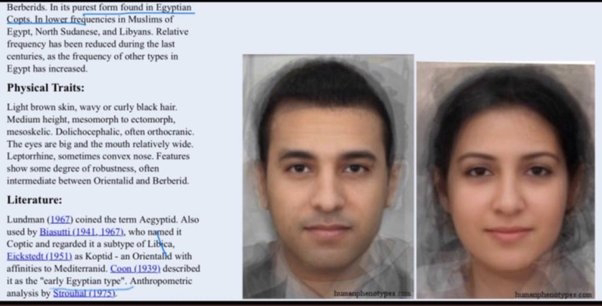I've seen these posts on the internet of black people, usually from U. S. A., claiming that Egyptian pharaohs were black. Mr. Cheikh Anta Diop did indeed prove that some Ancient Egyptian pharaohs & Ancient Egyptian citizens were genetically black. It's best when you can prove things scientifically with genetics & in simple terms so all can understand things lest ancient texts (heiroglyphics in this case) be misinterpreted by people who are less informed. Ancient Egyptians were said to be Hamitic people, their descendants are said to be the Coptic people of modern-day Egypt (see image below). As opposed to Arabs who are a Semitic people.
Even if they were black, I find it troubling to claim an identity that is not completely yours because when the true owners of it appear, you risk looking like a fraud. For example, I can't claim the works of the Oromo or Songhay as part of my identity even if they are black like me. I can claim works of Zulu, Swazi, Ndebele or even some northern Xhosa tribes because I am genetically Nguni. So this obsession with Nubian/Sudanese people (who were the black pharaohs of Ancient Egypt) by people who are most likely of West African origin, almost sounds baseless.
Even if they were black, I find it troubling to claim an identity that is not completely yours because when the true owners of it appear, you risk looking like a fraud. For example, I can't claim the works of the Oromo or Songhay as part of my identity even if they are black like me. I can claim works of Zulu, Swazi, Ndebele or even some northern Xhosa tribes because I am genetically Nguni. So this obsession with Nubian/Sudanese people (who were the black pharaohs of Ancient Egypt) by people who are most likely of West African origin, almost sounds baseless.

Comments